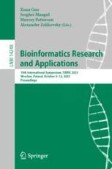Search
Search Results
-
Molecular architecture and gating mechanisms of the Drosophila TRPA1 channel
The transient receptor potential channel subfamily A member 1 (TRPA1) ion channel is an evolutionary conserved polymodal sensor responding to noxious...

-
De novo GRIN variants in M3 helix associated with neurological disorders control channel gating of NMDA receptor
N-methyl- d -aspartate receptors (NMDARs) are members of the glutamate receptor family and participate in excitatory postsynaptic transmission...

-
Coupling enzymatic activity and gating in an ancient TRPM chanzyme and its molecular evolution
Channel enzymes represent a class of ion channels with enzymatic activity directly or indirectly linked to their channel function. We investigated a...

-
A selectivity filter mutation provides insights into gating regulation of a K+ channel
G-protein coupled inwardly rectifying potassium (GIRK) channels are key players in inhibitory neurotransmission in heart and brain. We conducted...

-
Hydrophobic gating in bundle-crossing ion channels: a case study of TRPV4
Transmembrane ion channels frequently regulate ion permeation by forming bundle crossing of the pore-lining helices when deactivated. The resulting...

-
An LQT2-related mutation in the voltage-sensing domain is involved in switching the gating polarity of hERG
BackgroundCyclic Nucleotide-Binding Domain (CNBD)-family channels display distinct voltage-sensing properties despite sharing sequence and structural...

-
Homocysteine-Thiolactone Modulates Gating of Mitochondrial Voltage-Dependent Anion Channel (VDAC) and Protects It from Induced Oxidative Stress
AbstractThe gating of the Voltage-Dependent Anion Channel (VDAC) is linked to oxidative stress through increased generation of mitochondrial ROS with...

-
Investigating Circadian Gating of Temperature Responsive Genes
Understanding gene expression dynamics in the context of the time of day and temperature response is an important part of understanding plant...
-
Structural basis for assembly and lipid-mediated gating of LRRC8A:C volume-regulated anion channels
Leucine-rich repeat-containing protein 8 (LRRC8) family members form volume-regulated anion channels activated by hypoosmotic cell swelling. LRRC8...

-
Analysis of residue–residue interactions in the structures of ASIC1a suggests possible gating mechanisms
The gating mechanism of acid-sensitive ion channels (ASICs) remains unclear, despite the availability of atomic-scale structures in various...

-
Structure, gating and interactions of the voltage-dependent anion channel
The voltage-dependent anion channel (VDAC) is one of the most highly abundant proteins found in the outer mitochondrial membrane, and was one of the...

-
Sensory Gating in TAAR1 Knockout Mice
AbstractTrace amines (TA) are a family of endogenous compounds structurally similar to classical biogenic amines that may be involved in...

-
Engineering a K+ channel ‘sensory antenna’ enhances stomatal kinetics, water use efficiency and photosynthesis
Stomata of plant leaves open to enable CO 2 entry for photosynthesis and close to reduce water loss via transpiration. Compared with photosynthesis,...

-
Radiology Report Generation via Visual Recalibration and Context Gating-Aware
The task of radiology report generation aims to analyze medical images, extract key information, and then assist medical personnel in generating...
-
Molecular mechanism and structural basis of small-molecule modulation of the gating of acid-sensing ion channel 1
Acid-sensing ion channels (ASICs) are proton-gated cation channels critical for neuronal functions. Studies of ASIC1, a major ASIC isoform and proton...

-
Reconstitution of Calcium Channel Protein Orai3 into Liposomes for Functional Studies
AbstractStore-operated calcium entry (SOCE) is the main mechanism for the Ca 2+ influx in non-excitable cells. The two major components of SOCE are...

-
Ratio of Hydrophobic–Hydrophilic and Positive–Negative Residues at Lipid–Water-Interface Influences Surface Expression and Channel Gating of TRPV1
During evolution, TRPV1 has lost, retained or selected certain residues at Lipid–Water-Interface (LWI) and formed specific patterns there. The ratio...

-
Function and phylogeny support the independent evolution of an ASIC-like Deg/ENaC channel in the Placozoa
ASIC channels are bilaterian proton-gated sodium channels belonging to the large and functionally-diverse Deg/ENaC family that also includes peptide-...

-
Revealing molecular determinants governing mambalgin-3 pharmacology at acid-sensing ion channel 1 variants
Acid-sensing ion channels (ASICs) are trimeric proton-gated cation channels that play a role in neurotransmission and pain sensation. The snake...

-
Structural Mechanism of Ionic Conductivity of the TRPV1 Channel
AbstractThe so-called “hydrophobic gating” is widely discussed as a putative mechanism to control water and ion conduction via ion channels. This...

